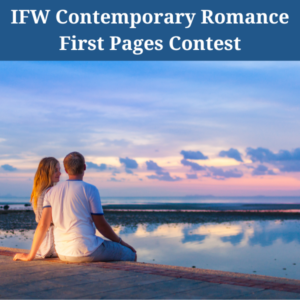
Influential Female Authors: Past, Present, and Rising
We’re going to look at influential female authors of the past, those impacting the present, and whom the industry expects to make a big splash.

In the world of contemporary romance fiction, the first page is akin to a romantic overture—setting the tone for the emotional journey that lies ahead. Aspiring writers, eager to weave tales of love and passion, must master the art of captivating their readers from the very start. Here are some practical tips to help you craft a first page that not only captures attention but leaves readers yearning for more.
A powerful opening line in your contemporary romance is a beacon that draws readers into your narrative. Consider the opening of Nora Roberts’ Vision in White:
 This line hints at something amiss, immediately creating a sense of intrigue and prompting readers to question what could possibly go wrong on what seems like a flawless day. Your opening line should be a hook, whether it’s a poignant reflection, a provocative statement, or an enigmatic question. My book Hard Cover opens with this:
This line hints at something amiss, immediately creating a sense of intrigue and prompting readers to question what could possibly go wrong on what seems like a flawless day. Your opening line should be a hook, whether it’s a poignant reflection, a provocative statement, or an enigmatic question. My book Hard Cover opens with this:
“Rory Parker was a billionaire douchebag who looked like a movie star. I knew this because we had gone to the same high school. I Google stalked him when he started sending me emails earlier this year. We traded quips and banter for several months like it was some bizarre foreplay. Then the real reason he contacted me came up. Rory hadn’t wanted to “reconnect”.”
The introduction of characters on the first page is an opportunity to make them memorable and relatable. In Colleen Hoover’s November 9, the main character, Fallon, is introduced in a vulnerable moment:
“I somehow manage to fall in love with Fallon a little bit more every time she laughs.”
This immediate connection between the character and the reader establishes an emotional investment from the outset. Create characters with distinctive qualities, quirks, or challenges that make them stand out. In my book A Cowboy for Merry, Merry comes across loud and clear.
“Merry Grayson loved Baradero, Argentina. The countryside, the colors, the food, and the hot gauchos who flirted with their eyes made her feel that she could do anything.”
The setting forms the backdrop for your contemporary romance, providing an atmosphere that enhances the overall reading experience. In Jojo Moyes’ Me Before You, the quaint English town of Stortfold becomes an integral part of the story.
 “The small town of Stortfold had a peculiar way of keeping secrets, each cobblestone street whispering tales of love and heartbreak.”
“The small town of Stortfold had a peculiar way of keeping secrets, each cobblestone street whispering tales of love and heartbreak.”
In my Christmas novella The Candy Cane Cowboy, Julie arrives at her grandmother’s ranch after being away for several years.
“The property was still as beautiful as she remembered. Around her, the fields glistened white with snow. In the distance, a fence and some scattered trees were pencil scratches on a white canvas. The large farmhouse’s shutters were now a faded red instead of the fire engine red that lived in her memories.”
Tension is the heartbeat of any romance novel, and the first page is where it begins to pulse. In Nicholas Sparks’ The Notebook, the tension is palpable from the first page:
“Noah knew that something was wrong the moment he stepped into the nursing home.”
This immediate sense of unease captivates readers, compelling them to uncover the source of the tension. In my motorcycle club romance novel Necessary Evil, public defender Lucy has to face an ex-cop:
“She hadn’t had enough coffee to face Evan this morning. It was bad enough when he had been a cop in her courtroom, and she had to nail his procedures to the wall. She didn’t like letting criminals get off on technicalities any more than he had, but she hated when cops allowed that to happen due to sloppy casework. Evan would take it personally when one of his perps walked. He had cornered her in the elevator after a trial and had banged his fist against the door in frustration.”
 Establish Contemporary Romance Voice and Tone.
Establish Contemporary Romance Voice and Tone.The voice and tone of your writing convey the emotional atmosphere of your romance. In my erotic romance Heat, the tone is sensual and intense, mirroring the nature of the story:
“Ordering another drink, Mallory sipped delicately through the tiny bar straw and felt her hips sway with the Pitbull song the band was playing. The dancers were writhing together in a sea of flesh and leather. The stress that had been bunched into a ball in the center of her back started to ease for the first time since she’d left David. She was surrounded by people having fun and losing their inhibitions—along with several items of clothing.”
Ensure your writing style aligns with the emotions you aim to evoke.
Crafting an irresistible first page for your contemporary romance novel requires a delicate balance of elements. As you embark on this journey, remember that each word, each line, and each character introduction contribute to the symphony of emotions you aim to create.
By implementing these tips and drawing inspiration from notable examples, you can craft a magnetic beginning that ensures your readers are not just observers but active participants in the love story you’ve carefully woven.
 Ready to try your hand at writing romance? Enter our Contemporary Romance First Pages Contest here!
Ready to try your hand at writing romance? Enter our Contemporary Romance First Pages Contest here!

We’re going to look at influential female authors of the past, those impacting the present, and whom the industry expects to make a big splash.

This week, we’re focusing on how we as writers can create strong female characters that others will look up to, instead of harmful stereotypes.

Is your writing routine reaching its potential? Maybe it’s time to take another look so you can see what’s possible for your writing.
1000 N. West Street #1200, Wilmington, DE 19801
© 2024 Direct Learning Systems, Inc. All rights reserved.

1000 N. West Street #1200, Wilmington, DE 19801
© 2025 Direct Learning Systems, Inc. All rights reserved.

1000 N. West Street #1200, Wilmington, DE 19801
©2025 Direct Learning Systems, Inc. All rights reserved. Privacy Policy.